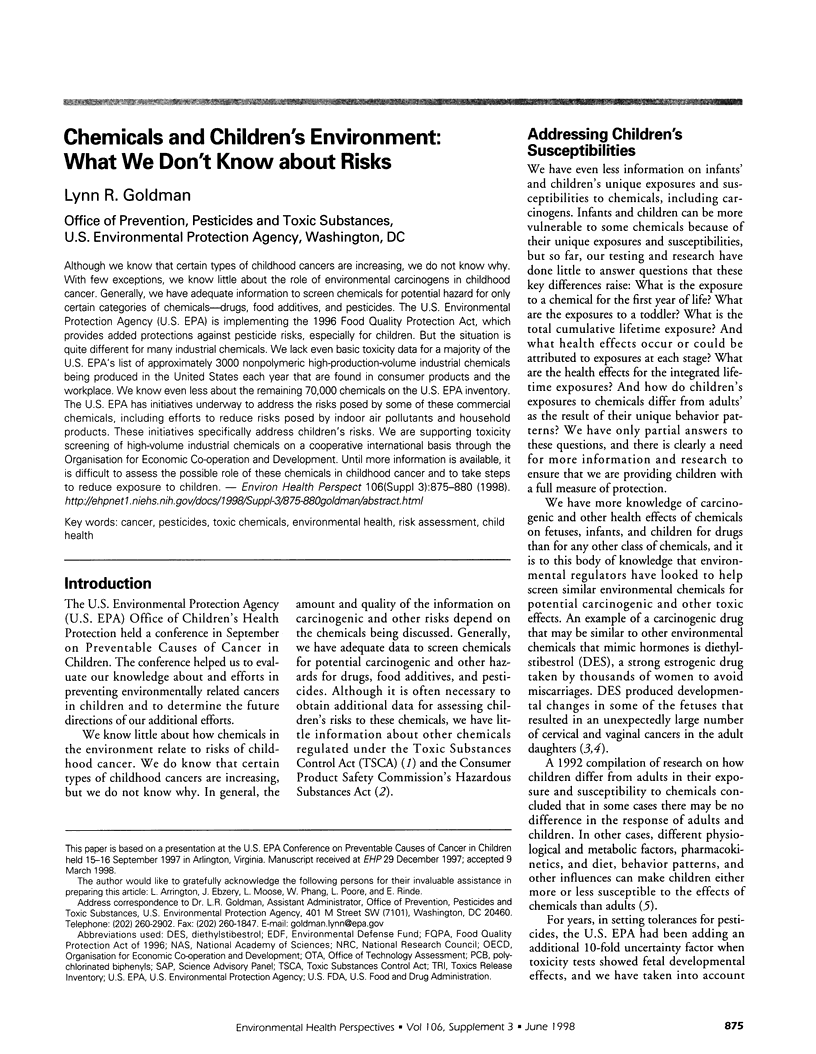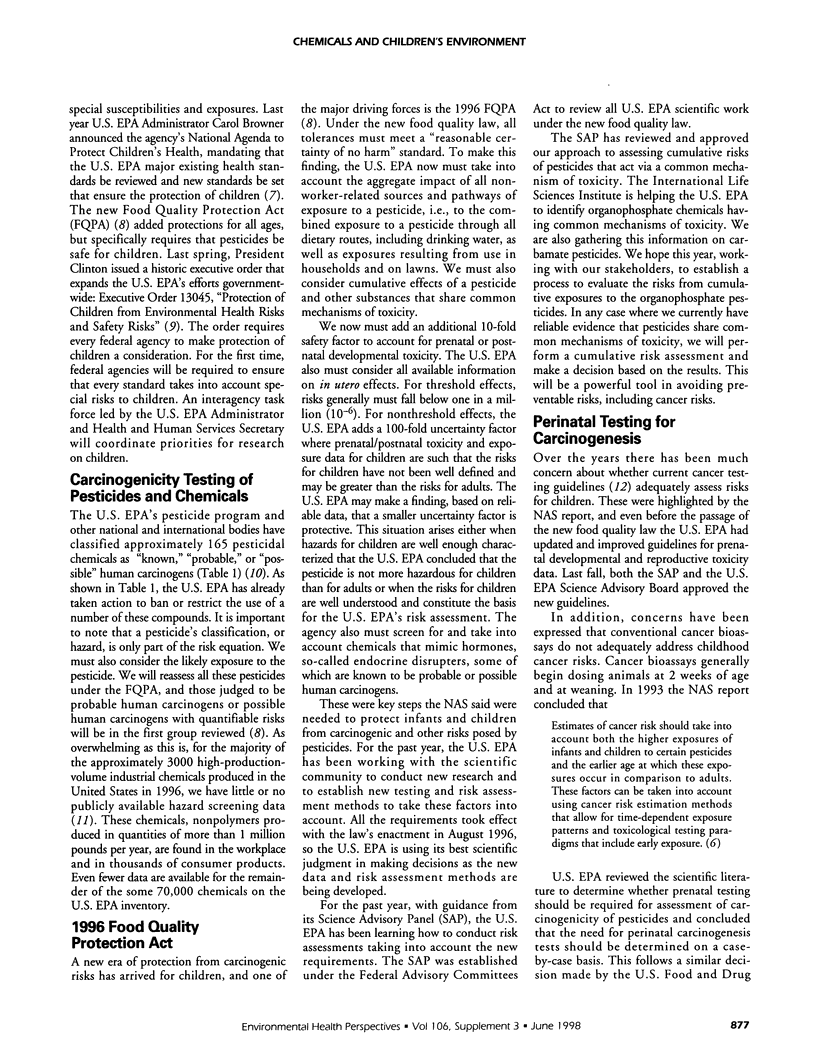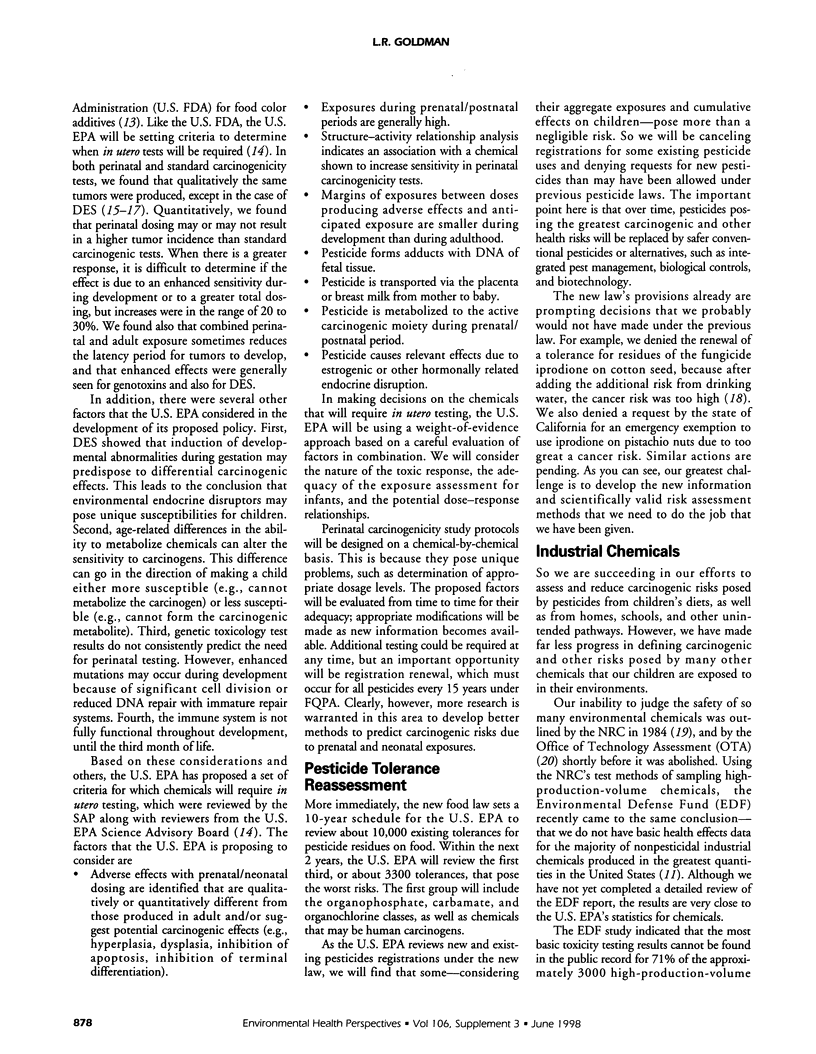Abstract
Although we know that certain types of childhood cancers are increasing, we do not know why. With few exceptions, we know little about the role of environmental carcinogens in childhood cancer. Generally, we have adequate information to screen chemicals for potential hazard for only certain categories of chemicals--drugs, food additives, and pesticides. The U.S. Environmental Protection Agency (U.S. EPA) is implementing the 1996 Food Quality Protection Act, which provides added protections against pesticide risks, especially for children. But the situation is quite different for many industrial chemicals. We lack even basic toxicity data for a majority of the U.S. EPA's list of approximately 3000 nonpolymeric high-production-volume industrial chemicals being produced in the United States each year that are found in consumer products and the workplace. We know even less about the remaining 70,000 chemicals on the U.S. EPA inventory. The U.S. EPA has initiatives underway to address the risks posed by some of these commercial chemicals, including efforts to reduce risks posed by indoor air pollutants and household products. These initiatives specifically address children's risks. We are supporting toxicity screening of high-volume industrial chemicals on a cooperative international basis through the Organisation for Economic Co-operation and Development. Until more information is available, it is difficult to assess the possible role of these chemicals in childhood cancer and to take steps to reduce exposure to children.
Full text
PDF





Selected References
These references are in PubMed. This may not be the complete list of references from this article.
- Chhabra R. S., Bucher J. R., Haseman J. K., Elwell M. R., Kurtz P. J., Carlton B. D. Comparative carcinogenicity of polybrominated biphenyls with or without perinatal exposure in rats and mice. Fundam Appl Toxicol. 1993 Nov;21(4):451–460. doi: 10.1006/faat.1993.1121. [DOI] [PubMed] [Google Scholar]
- Herbst A. L., Ulfelder H., Poskanzer D. C. Adenocarcinoma of the vagina. Association of maternal stilbestrol therapy with tumor appearance in young women. N Engl J Med. 1971 Apr 15;284(15):878–881. doi: 10.1056/NEJM197104222841604. [DOI] [PubMed] [Google Scholar]


